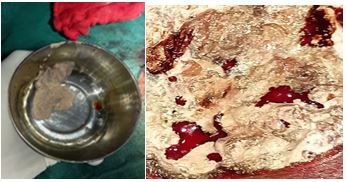Management of Recurrent Pilonidal Sinus through Ayurveda Care and Surgery - A Case Report
Keywords:
Apamarga Ksharakarma, Pilonidal sinus, Shalyajanya Nadivrana, AyurvedaAbstract
Introduction: Pilonidal disease refers to subcutaneous infection occurring in the upper half of the gluteal cleft having no communication in the anal canal. In Ayurveda it can be correlated to Shalyajanya Nadivrana which is described in detail by Acharya Sushrutha. It presents as an acute abscess or chronic wound associated with pus discharge and severe discomfort. In this case report we present 20 years old female patient who reported to the OPD of Shalya SDMCAH with the complains of pain associated with pus discharge at the natal cleft region since two weeks with a history of Z plasty surgery. Methods: The case was managed by surgical excision followed by Kshara Karma, Triphala Prakshalana and dressing with Jatyadi Taila. Internally the patient was administered with Triphala Guggulu and Gandhaka Rasayana. Discussion: Apamarga Kshara helps in removal of unhealthy granulation tissue and cellular debris by sclerosing properties thereby lowering the recurrence rate. Triphala Prakshalana and wound dressing by Jathyadhi Taila fastens the healing process by microcidal effect. Results: The initial complains of pain associated with pus discharge subsided within seven days, while complete healing of the tract was observed within two months. Conclusion: The surgical approach in contemporary science includes excision with reconstructive flaps (z-plasty). However, the recurrence rate is more and there are increased chances of developing wound infection. Hence in this case excision of sinus followed by apamarga kshara pratisarana was incorporated which showed promising results along with complete healing of the tract.
Downloads
References
Bailey & Love’s, Short practice of surgery, 26th edition, Part 11 abdominal, chapter 69, The small and large intestine, 2013; 1174.
Manipal manual of surgery, fourth edition, 2014; 820.
Sabiston Text book of surgery, First south Asia edition, Volume II, Elsevier publication, section X, chapter 46 Acute gastrointestinal haemorrhage, 2017; 1408.
SRB’s Manual of Surgery, 5th edition, 22 chapter, Large intestine, 2017; 909.
Farquharson’s text book of operative general surgery, international student edition, 10th edition, CRS press, 2015: 456.
A manual of clinical surgery by Dr S. Das 12th edition, 2016: 98.
B D Chaurasia’s human anatomy, volume 2, CBS publishers, seventh edition, 2016: 402.
A manual on fistula in ano and ksharsutra therapy by Dr M Sahu, first edition, 2015: 118
Charaka samhita, By Dr Brahmananda Tripathy, Chaukhamba surbharati prakashan, Varanasi,: chapter 9, verse 8, 2013: 139.
Charaka samhita, By Dr Brahmananda Tripathy, Chaukhamba surbharati prakashan, Varanasi,: chapter 11, verse 32-33, 2013: 230.















